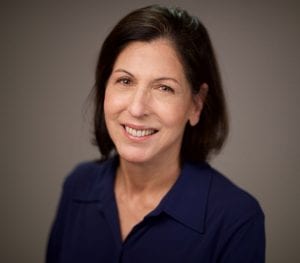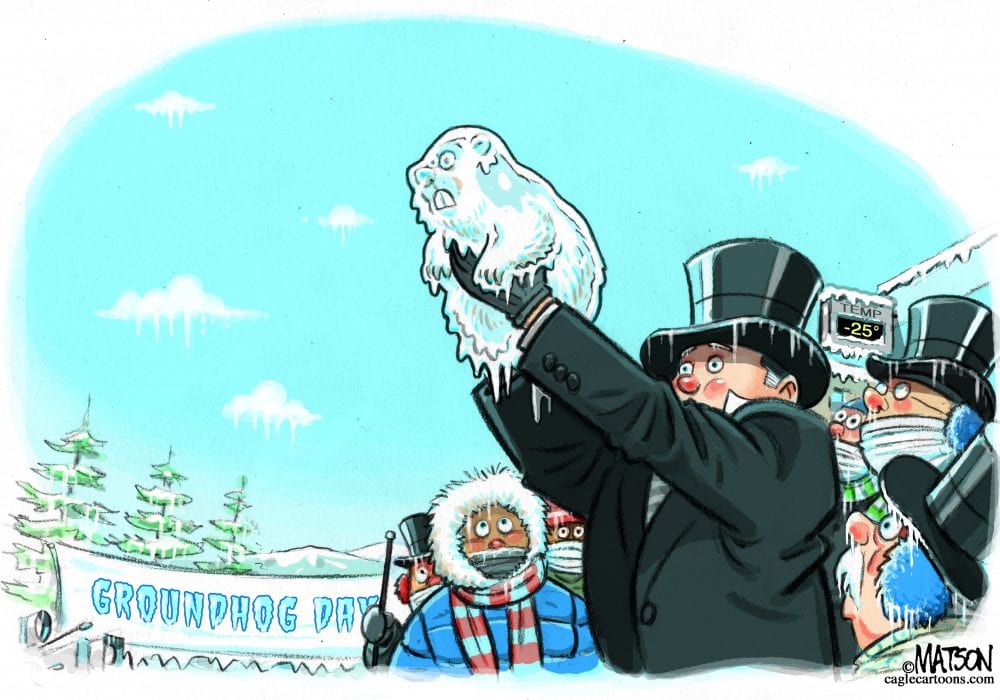BY FROMA HARROP
 Saturday is Groundhog Day. It is the day when many eyes will turn to Gobbler’s Knob, a wooded hill a couple of miles outside Punxsutawney, PA. A man in a top hat will pull a hibernating groundhog out of a simulated tree trunk. If the rodent sees his shadow, then we’ll have six more weeks of winter. If not, then spring comes early. Either way, Punxsutawney Phil [the groundhog] may bite the handler. It’s happened.
Saturday is Groundhog Day. It is the day when many eyes will turn to Gobbler’s Knob, a wooded hill a couple of miles outside Punxsutawney, PA. A man in a top hat will pull a hibernating groundhog out of a simulated tree trunk. If the rodent sees his shadow, then we’ll have six more weeks of winter. If not, then spring comes early. Either way, Punxsutawney Phil [the groundhog] may bite the handler. It’s happened.
As for the science of it, there isn’t any. There’s no correlation between the groundhog’s seeing his shadow and the arrival of springlike weather, “studies have shown.”
No matter. This charming little ritual has spread to Sun Prairie, WI; French Canada [“Jour de la Marmotte”] and beyond. [At the Oklahoma City Zoo, grizzy bear brothers Will and Wiley will serve as long-term forecasters.]
Groundhogs alleged to possess predictive power seem to be multiplying. In New York City, there’s a Staten Island Chuck. But having done it since at least 1886, the Pennsylvania heartland has Groundhog Day pretty well nailed down.
Groundhog Day is more than an annual stop in the American pop calendar. It is a beautiful combination of the earthly and the celestial, the down-home and the spiritual.
That Groundhog Day happens the same time every year is the point of it. In the hilarious 1993 comedy Groundhog Day, Bill Murray’s character is a local TV weatherman who covers the event year after year after year. Then, on one Groundhog Day, he wakes up to find himself trapped in a time loop.
Most of us have events on the calendar, same date every year, that are notable for their predictability. The military and government now use “groundhog day” in reference to a recurring situation.
But that’s the surface reading of Groundhog Day. Its origins obscured by time, Groundhog Day is believed to be a folk custom brought over from Germany by the Pennsylvania Dutch. In Germany, the animal tasked to predict the weather is a badger.
Germans had a tradition of connecting Candlemas with “Badger Day.” In Christian observance, Candlemas [Feb. 2] is a day to bless candles. Many Christians consider Jesus the “light of the world,” hence the candlelit processions before Masses and services on Candlemas.
And what do we in the Northern Hemisphere perceive at the start of February? More light! The days are getting noticeably longer. There’s welcome change afoot.
Those little white flowers we call snowdrops [or Candlemas bells] are popping out of the ground. However brutal the cold and deep the snowdrifts, snowdrops reassure us that spring has not forgotten us. Just hold on.
Candlemas itself is said to be linked to pre-Christian traditions – the rite for the Roman god Februus observed this time of year. And that may have earlier Celtic origins. This veneration of the return of light was shared by humans from the earliest civilizations, and probably before that.
The scientific explanation is that Earth is tilted. As it circles the sun, the Northern and Southern hemispheres switch being closer to the brightest star. When it’s spring in Chicago, it’s fall in Buenos Aires. When it comes to planetary movements, boring repetition is a good thing.
This natural cycle takes place regardless of what earthlings are up to. Revolutions and wars have no impact on these happenings. It will be spring no matter how nice or unpleasant the people down below make it.
And that’s the loveliness of Groundhog Day. Simple, grounded in nature and noncommercial – maybe just a tad in rural Pennsylvania – it connects us moderns with the ancients of millennia ago. Whatever the marmot of your choosing, enjoy the spectacle, and know that Mother Nature is posting from the great Twitter in the sky that spring is on the way.
– Froma Harrop’s columns appear regularly in The Oklahoma Observer
Creators.com








